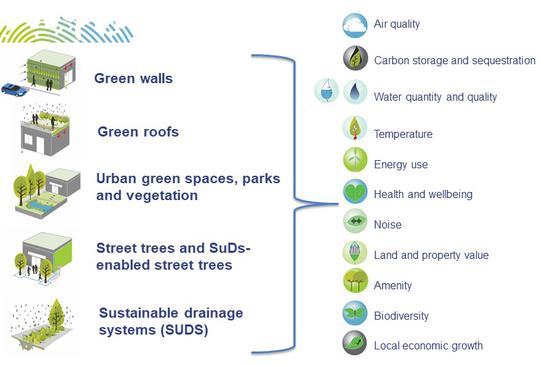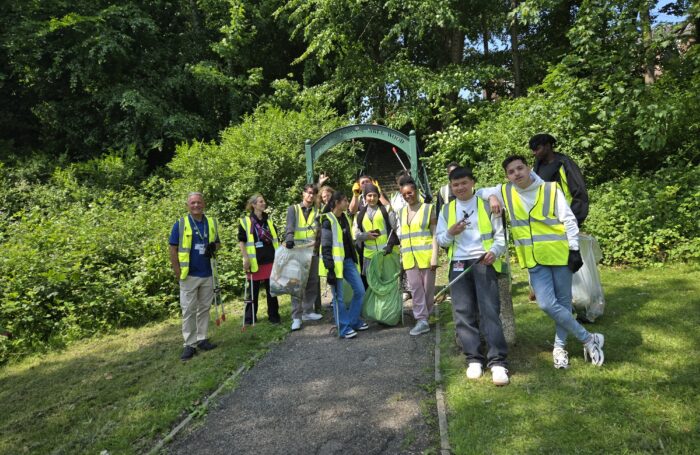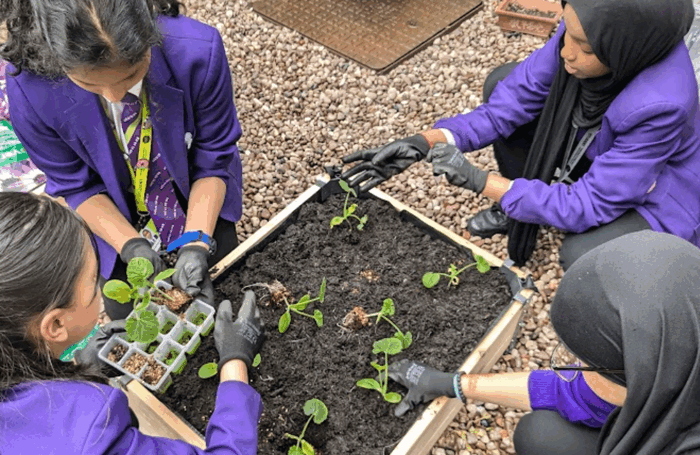Sustainable drainage systems include: Rain gardens, ponds and retention areas, wetlands, soakaways, infiltration trench, permeable surfaces, filter strips
Flooding is estimated to cost the UK £340million per annum[i] and can devastate communities and businesses. Additionally this increased need for capacity in our drains means that combined sewage overflows spill out into our environment more frequently. The Environment Agency estimates these sewer overflows lead to around 30 per cent of sea pollution in the North West. When this is coupled with the findings that 15% of species from Great Britain are threatened with extinction, just 35% of water bodies have “good” or “high” ecological status and, since the 1950s, wildflowers have been lost at a rate of up to nearly one species per year per county[ii], sustainable drainage systems are a no-brainer.

How do we know the benefits?
While more green space is widely perceived as beneficial, the IGNITION project wants to drill down into the detail of who these benefits effect and how and why they’re so powerful. As part of the project, research was undertaken by project partners GMCA and BITC to review available evidence on the benefits of nature-based solutions. These solutions included green roofs, green walls, street trees, sustainable drainage systems, urban parks and green spaces. Over six months, the project reviewed:
- 1000+ evidence items
- five urban nature-based solutions
- 12 benefits across social, environmental and financial areas; such as health and local economic growth
This evidence base, available to download alongside supporting resources here, will remain a live repository of information, updated with new studies when they become available. Watch our ‘How to use the evidence base’ webinar here.
There are 143 evidence items within the evidence base for sustainable drainage systems.

What did we find?
Sustainable drainage systems can help us to:
- provide financial incentives for developers, owners and occupants by increasing property value by around 1% when within 200m of a small blue space, and by around 4% when close to a large blue space.
- tackle climate change by soaking up 0.2-0.3 kg of carbon per m2 per year and storing 1.6-5 kg of carbon per m2 (This is excluding wetlands which can handle significantly more!)
- adapt to the increased rainfall caused by climate change by some systems completely containing any rainfall runoff, others can reduce the flow by 70%, and delay it by 30 minutes
- restore our natural environment by replicating the species richness of a natural pond by 60-80% and providing a habitat, refuge, and a food source for many different species of plants and animals, that would otherwise not exist with grey infrastructure.
- mitigate damage to our natural environment by filtering runoff water, reducing the presence of pollutants such as nitrates by up to 79%, phosphates by up to 85% and total suspended solids by up to 95%
The design of sustainable drainage systems varies considerably between the different sub-systems. Some, such as swales, are regularly used in road construction to handle runoff and some are used for both their aesthetic and practical purposes, like raingardens (see Moorlands school, or the new Grow Green ‘sponge park’ in West Gorton, for example). Keep an eye out for the IGNITION nature-based solutions Living Lab at the University of Salford that will show interconnecting sustainable drainage systems, whilst monitoring and researching their performance on water quality and retention.
The evidence shows that sustainable drainage systems have the potential to transform our towns and cities, not only by soaking up rainfall but by adding value to our neighbourhoods, helping us tackle and adapt to climate change and to restore our natural environment.
[i] https://www.bitc.org.uk/report/water-resilient-cities-the-business-case-for-investing-in-water-resilience-in-greater-manchester/
[ii] https://nbn.org.uk/wp-content/uploads/2019/09/State-of-Nature-2019-UK-full-report.pdf



